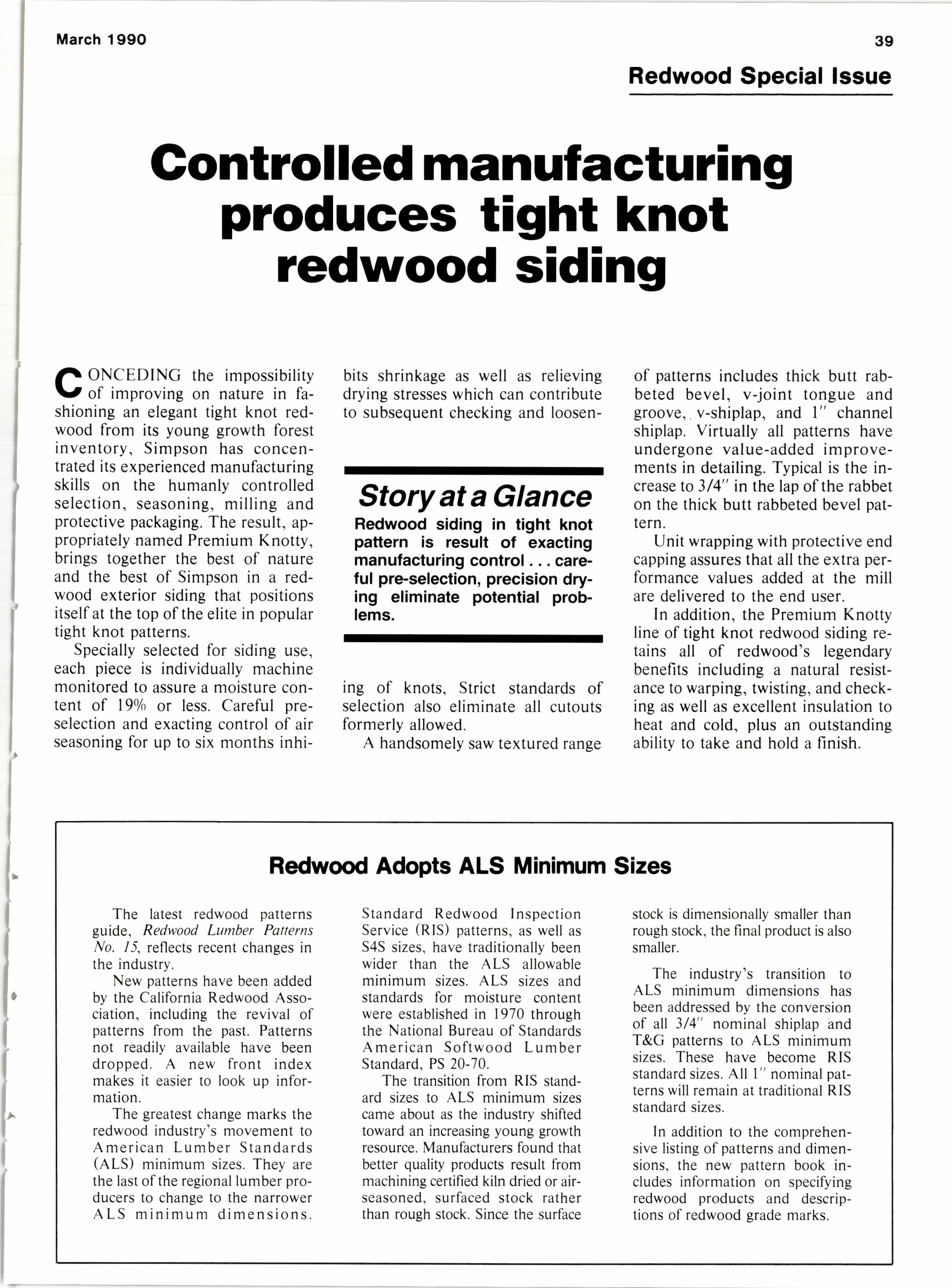
2 minute read
Gontrol led manufacturingproduces tight knot redwood siding
ONCEDING the impossibility of improving on nature in fashioning an elegant tight knot redwood from its young growth forest inventory, Simpson has concentrated its experienced manufacturing skills on the humanly controlled selection, seasoning, milling and protective packaging. The result, appropriately named Premium Knotty, brings together the best of nature and the best of Simpson in a redwood exterior siding that positions itself at the top of the elite in popular tight knot patterns.
Specially selected for siding use, each piece is individually machine monitored to assure a moisture content of l9olo or less. Careful preselection and exacting control of air seasoning for up to six months inhi- bits shrinkage as well as relieving drying stresses which can contribute to subsequent checking and loosen-
Story at a Glance
Redwood siding in tight knot pattern is result of exacting manufacturing control careful pre-selection, precision dry- ing eliminate potential proF lems. ing of knots, Strict standards of selection also eliminate all cutouts formerly allowed. A handsomely saw textured range of patterns includes thick butt rabbeted bevel, v-joint tongue and groove,.v-shiplap, and l" channel shiplap. Virtually all patterns have undergone value-added improvements in detailing. Typical is the increase to 3/4" in the lap of the rabbet on the thick butt rabbeted bevel pattern.
Unit wrapping with protective end capping assures that all the extra performance values added at the mill are delivered to the end user.
In addition, the Premium Knotty line of tight knot redwood siding retains all of redwood's legendary benefits including a natural resistance to warping, twisting, and checking as well as excellent insulation to heat and cold, plus an outstanding ability to take and hold a finish.
Redwood Adopts ALS Minimum Sizes
The latest redwood patterns guide, Redwood Lumber Patterns No. I 5, reflects recent changes in the industry.
New patterns have been added by the California Redwood Association, including the revival of patterns from the past. Patterns not readily available have been dropped. A new front index makes it easier to look up information.
The greatest change marks the redwood industry's movement to American Lumber Standards (ALS) minimum sizes. They are the last of the regional lumber producers to change to the narrower ALS minimum dimensions.
Standard Redwood Inspection Service (RIS) patterns, as well as S4S sizes, have traditionally been wider than the ALS allowable minimum sizes. ALS sizes and standards for moisture content were established in 1970 through the National Bureau of Standards American Softwood Lumber Standard, PS 20-70.
The transition from RIS standard sizes to ALS minimum sizes came about as the industry shifted toward an increasing young growth resource. Manufacturers found that better quality products result from machining certified kiln dried or airseasoned, surlaced stock rather than rough stock. Since the surface stock is dimensionally smaller than rough stock, the final product is also smaller.
The industry's transition to ALS minimum dimensions has been addressed by the conversion of all 3/4" nominal shiplap and T&G patterns to ALS minimum sizes. These have become RIS standard sizes. All l" nominal patterns will remain at traditional RIS standard sizes.
In addition to the comprehensive listing of patterns and dimensions, the new pattern book includes information on specifying redwood products and descriptions of redwood grade marks.










